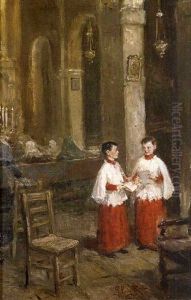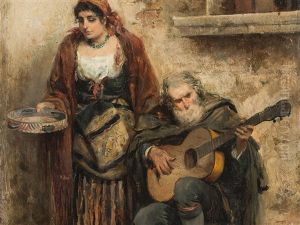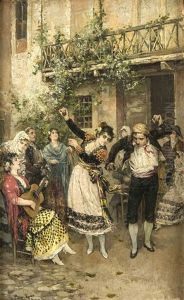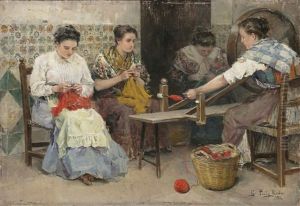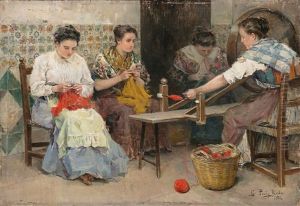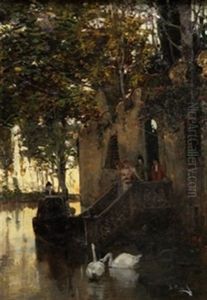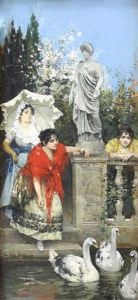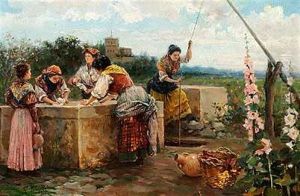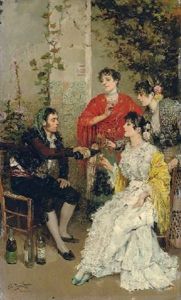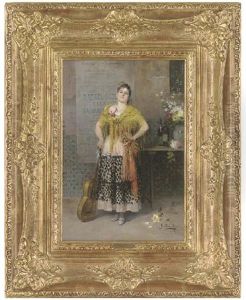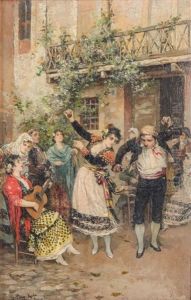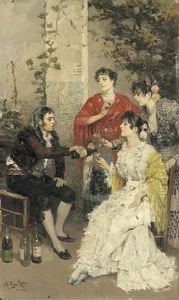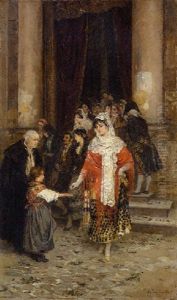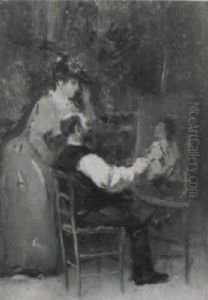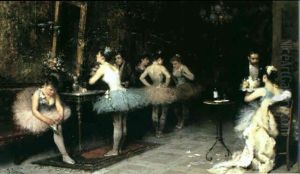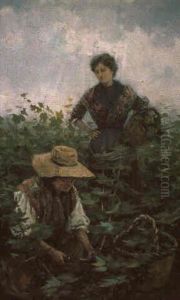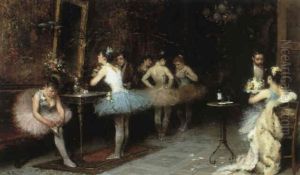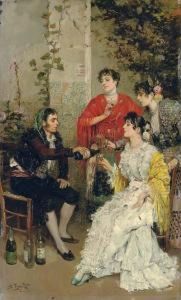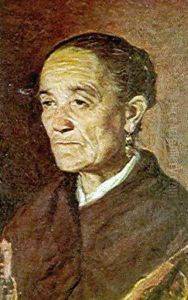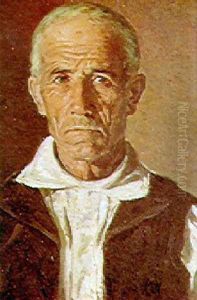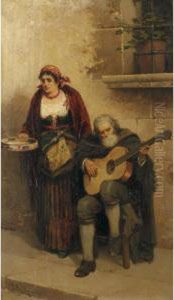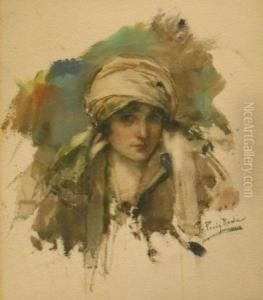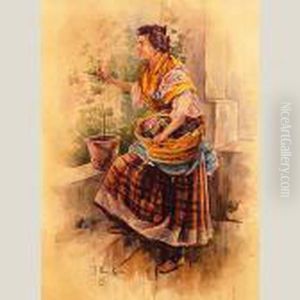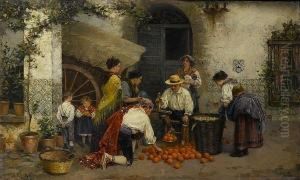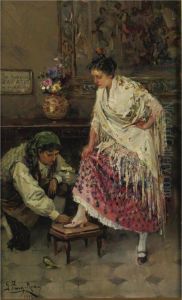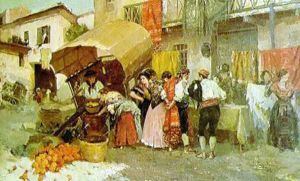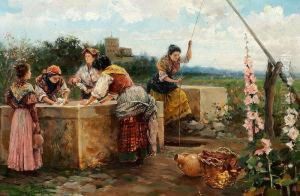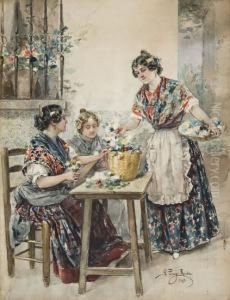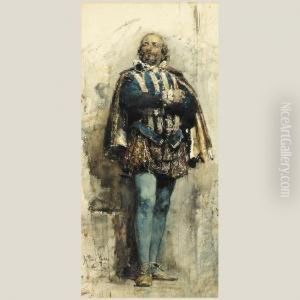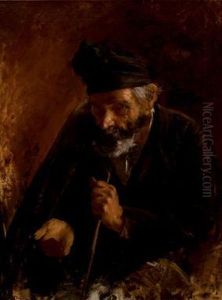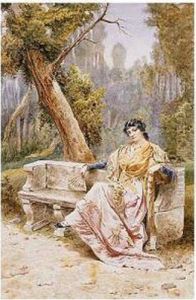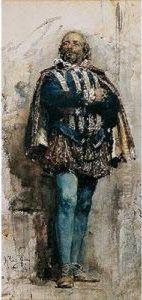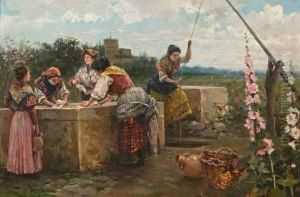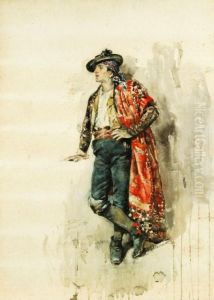Gabriel Puig Roda Paintings
Gabriel Puig Roda was a distinguished Spanish painter, born in Tarragona, Spain, in 1865. He was known for his contributions to the genres of portrait and historical painting, capturing the essence of his subjects with a unique blend of realism and symbolism. Puig Roda's early life was marked by a profound interest in the arts, leading him to pursue his studies at the School of Fine Arts in Barcelona. His talent and dedication were evident from the beginning, earning him recognition and several awards during his academic career.
In the late 19th century, Puig Roda traveled to Rome, where he was profoundly influenced by the Italian Renaissance and Baroque periods, which would later be reflected in his own work. His time in Italy was pivotal, as it allowed him to study the masters and refine his technique, blending traditional elements with his own innovative style. Upon returning to Spain, he settled in Valencia, where he became a key figure in the local art scene, contributing significantly to its development during the early 20th century.
Puig Roda's paintings often depicted scenes of historical significance, religious themes, and portraits that went beyond mere representation to capture the psychological depth of his subjects. He was adept at using light and shadow to enhance the emotional impact of his work, making his paintings highly sought after by collectors and institutions alike. Among his most notable works are his contributions to the decorations of the San Pío V Museum in Valencia, which remain a testament to his artistic legacy.
Despite his success, Puig Roda's career was relatively short-lived, as he passed away in 1919. However, his influence on Spanish painting, particularly in Valencia, continued to be felt long after his death. His approach to painting, characterized by a blend of realism, attention to detail, and a deep understanding of human nature, has been studied and admired by art historians and practitioners alike. Gabriel Puig Roda remains a significant figure in the history of Spanish art, celebrated for his ability to transcend the boundaries of his time and leave a lasting imprint on the world of art.
